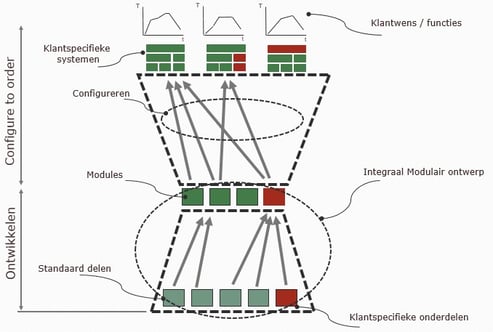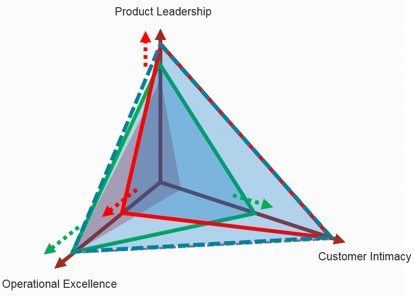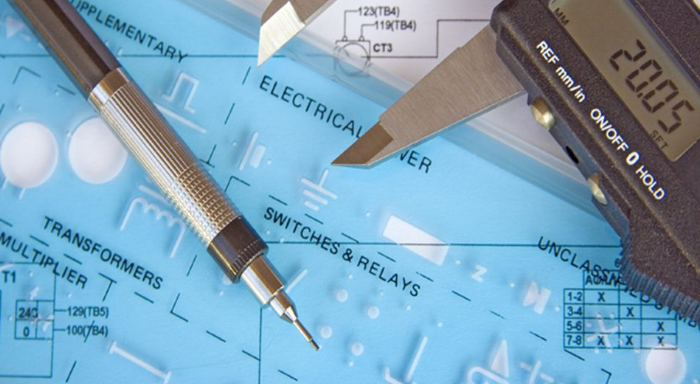
Due to flexible customer demand and increased pressure on both the integral costs and the order lead time, many companies in the manufacturing industry are looking for a product structure with which they can simply fulfil customer demand. A product structure that is on the one hand robust enough to use throughout the entire chain, but on the other flexible enough to answer (for a large part) customer demand.
In this blog, I will present essential tips for designing a product architecture that will make you as OEM developer in the manufacturing industry future-proof.
Tip: think hard about what you want to achieve as OEM developer
Dutch OEM developers produce sustainable capital goods in often small, client-specific series. Think about machines for food processing, machines for the production of solar cells, process equipment, etcetera.
So, we are not talking about the production of, for example, a certain type/model car here. Such a series is larger and the producer is in a better position to direct the supply. These producers are able to make the supply 100% configurable and the design 100% Ato. They can move the customer order-decoupling point back with the production of a module Downside of this type of series is, for example, that it is impossible for the buyer to order a car with a triangular open roof.
The OEM developer with a small series in which the end customer has more influence (or would like to have) will not be able to do this. What is possible here, is an interesting question. On the basis of analyses of sales, strategy and design, a lot more information can be translated into a clear goal for your configure-to-order product family; a goal such as: “we would like to configure xx % of the customer demand in xx time against xx integral costs.” or: “we would like to be able to produce xx of the orders with xx modules” and that is an important guideline for your module layout.
Tip: remember that modularisation is not the same as standardisation
There is a difference between standardising and modularising, although these expressions are regularly used interchangeably. At PostenDekker we only use the phrase standardisation at a component level. With modularisation we mean the smart assembly of (sub)modules with a standardised set of components (see picture).

Tip: think integrally
Modules are not only a representation of a technical functionality. They also represent a function that the client needs and that they can put on the market in different variants, if desired. It also represents a bill of materials that should be purchased, produced and assembled in a simple manner. Look at the functions and your design with an integral eye, listen to all stakeholders in the chain and translate that into an optimal design.
Tip: think in functions
Perhaps self-evident, but think in functions. As far as we are concerned, a module is characterised by three things: fulfilling a function, a normalised interface and a suitable module strategy. The question then is: which functions do I need to meet customer requirements. And don’t forget: a function is described by a verb; the principle of operation constitutes the module. So support is the function, the (sub)modules are the frame.
Tip: a strategy for each module
In order to make the product structure flexible, we use module drivers. The module drivers help to decide whether functions and sub-functions should or should not be placed together. Module drivers can be placed on a strategic axis of the Tracey & Wiersema model. This way you can determine whether it is better to fill in a function with an operational excellence strategy (often by using a frame) or that a function (and so a module) is client-specific and should remain to be so; customer intimacy. By determining this, you can design and implement the module in the entire chain according to this strategy - from order intake to production and assembly.

Tip: product architecture as generic framework
Use the architecture as a generic framework. A proper architecture is a product model that you can use for years to come, to which you can add innovations, replace or add functions and also can implement improvements on a module level. So in small steps and in a controlled manner.
It is also a framework that is generic and can be the basis for the structures that every discipline or department within the organisation needs. Because it is a fact that sales looks at a certain product differently than work preparation. A good architecture is a generic model from which a sales structure or a production structure can be created.
Contact us if you would like to know more.











